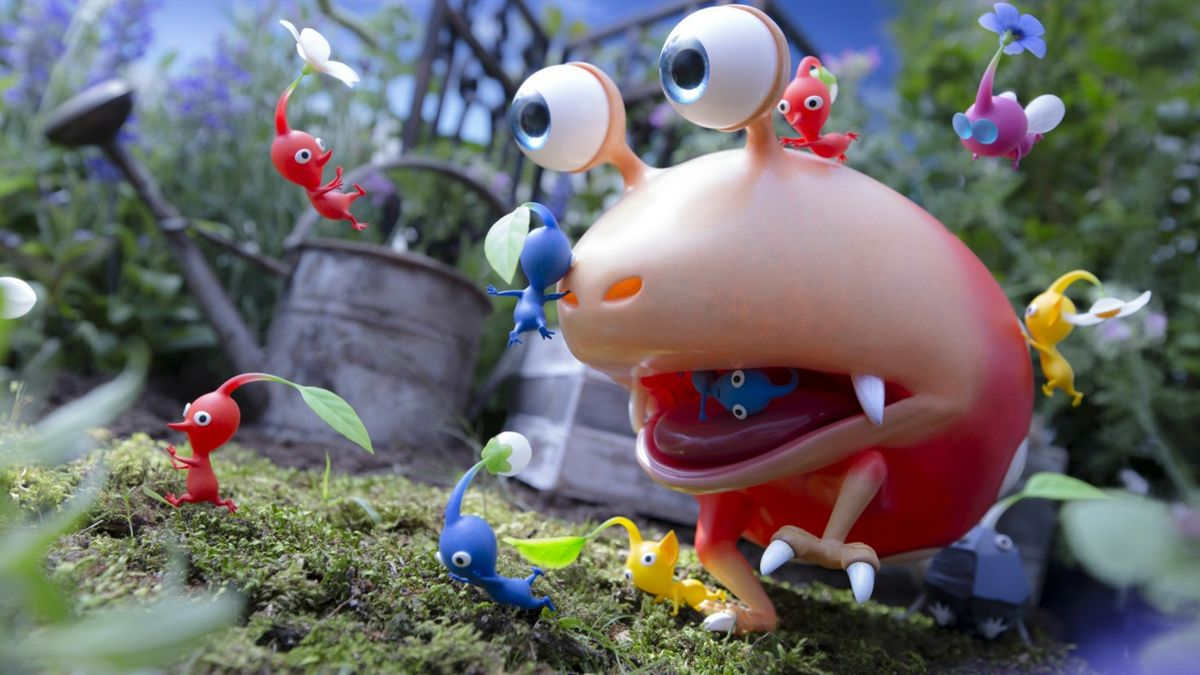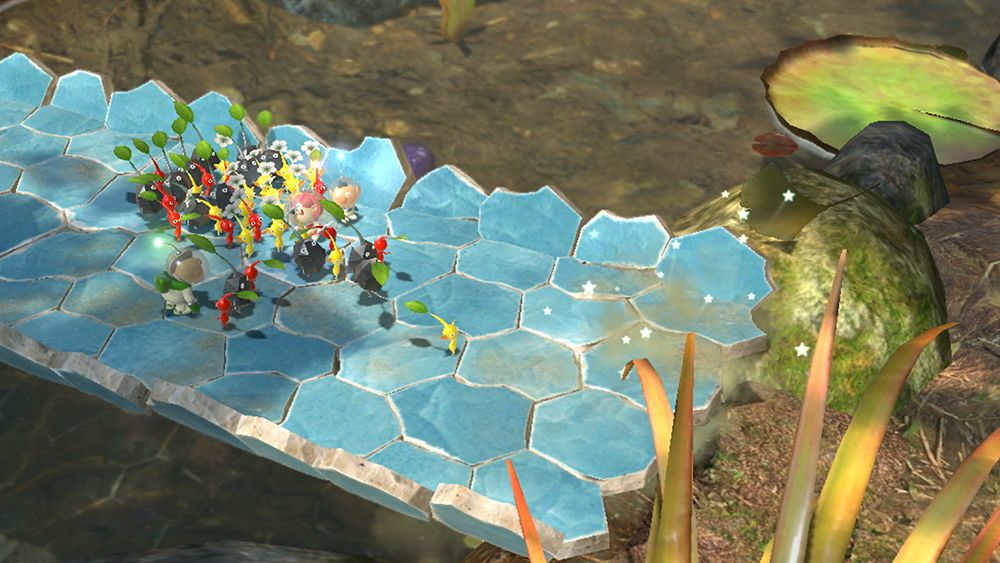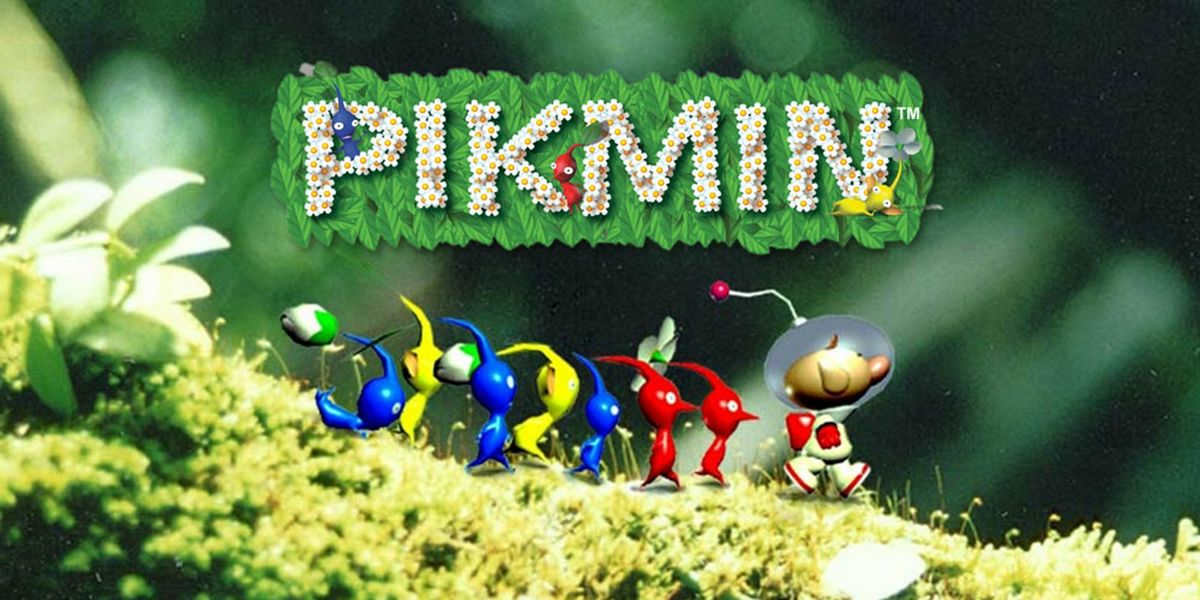Pikmin 2, developed by Nintendo for the GameCube in 2004, is a classic real-time strategy game that challenges players to lead an army of tiny plant-like creatures called Pikmin through increasingly complex and dangerous environments. Building upon the success of its predecessor, Pikmin 2 offers improved graphics, new gameplay mechanics, and an expanded collection system that rewards players for exploration and experimentation. As one of the most beloved titles in the Nintendo library, Pikmin 2 has garnered critical acclaim for its innovative gameplay design and charming aesthetic. In this article, we will explore the world of Pikmin 2 and examine what makes it such a beloved addition to the gaming canon. From its unique blend of puzzle-solving and strategic combat to its memorable cast of characters, we will delve deep into every aspect of this iconic title. So grab your Wii Remote or GameCube controller and join us as we venture forth into the lush landscapes inhabited by these curious little creatures known as Pikmin!
- Pikmin 2: An Overview of the Game and its Mechanics
- Delving into the Complexities of Pikmin Management in Pikmin 2
- Strategy Guide for Efficiently Collecting Treasures in Pikmin 2
- The Role of Currency in Pikmin 2 and How to Maximize Your Profits
- Analyzing the Gameplay Changes from Pikmin to Pikmin 2
- A Detailed Look at the Different Types of Enemies Encountered in Pikmin 2
- Understanding the Importance of Multiplayer Mode in Enhancing your Experience with Pikmin 2
Pikmin 2: An Overview of the Game and its Mechanics
The game expands on its predecessor, Pikmin, introducing new gameplay mechanics and features. Players control Captain Olimar and his partner Louie as they explore different areas searching for treasures while commanding groups of Pikmin to complete various tasks.
The core mechanic of Pikmin 2 revolves around managing resources and utilizing the unique abilities of each type of Pikmin. There are five types: Red (immune to fire), Blue (able to swim), Yellow (can be thrown higher), Purple (heavy damage dealers) and White (poisonous). Each type can be used in different situations throughout the game world, whether it’s navigating treacherous environments or battling enemies that require specific strategies.
In addition to resource management, players must also prioritize which tasks need completing first since each day only lasts a limited time before Olimar and Louie must return to their spaceship. The pressure is heightened by the presence of enemy creatures that constantly threaten your group of Pikmin – if too many are lost in battle or left behind at nightfall, progress will stall until more can be grown from sprouts found scattered across levels.
Overall, Pikmin 2 offers an immersive experience requiring strategic thinking and quick decision making skills from players as they navigate complex environments filled with danger and treasure alike. Its combination of exploration, combat mechanics, puzzles solving elements make it one of Nintendo’s most beloved games ever made.
Delving into the Complexities of Pikmin Management in Pikmin 2
The player must navigate intricate levels and manage different groups of Pikmin to complete objectives and defeat enemies. This game demands a strategic approach to maximize efficiency and minimize casualties.
The key to success in managing a group of Pikmin is knowing how each type interacts with the environment. Red Pikmin are immune to fire, blue can survive underwater, while yellow have electrical resistance and can be thrown higher than other colors. White pikmin are immune to poison damage but vulnerable in combat, while purple pikmins have immense strength but move slowly. Knowing which type to use for certain tasks will prove essential as players progress through the game’s challenging obstacles.
Additionally, proper allocation between teams becomes crucial when facing formidable foes or traversing hazardous terrain such as water or poison areas. Therein lies the added complexity – keeping track of multiple teams at once without sacrificing productivity proves an incredibly difficult task that adds layers upon layers of depth on top an already involved gameplay loop.

Overall it’s clear that mastering complex ‘Pikmind’ management techniques is essential for those seeking victory in this critically acclaimed title – one that stands out from its peers due largely to its intricately thought-out mechanics.
Strategy Guide for Efficiently Collecting Treasures in Pikmin 2
The game requires players to explore different environments and collect treasures using various types of Pikmin with unique abilities.
To start, it is essential to prioritize which areas or regions to explore first based on their difficulty level and available resources. Players should also plan ahead by selecting the right combination of Pikmin depending on the type of obstacles they may face along the way.
In terms of collection, players should use each type of Pikmin strategically. For instance, Red Pikmin are best suited for fighting enemies and breaking down walls while Yellow ones can carry bombs that help clear paths.
Moreover, Blue Pikmin are vital when exploring underwater sections as they can survive in water longer than other types. White and Purple Pikmins’ special abilities come into play during boss battles when added damage is crucial.
Finally, managing time effectively is critical in enhancing efficiency while collecting treasures. This involves avoiding unnecessary backtracking by planning routes carefully and choosing shortcuts wisely. In conclusion, applying these strategies will undoubtedly lead to efficient treasure collection in this exciting adventure game!
The Role of Currency in Pikmin 2 and How to Maximize Your Profits
The player must navigate through various environments and collect valuable treasures that can be sold to the in-game shop for Pokos – the game’s currency. This economic system adds an interesting layer of strategy to gameplay as players must decide whether to prioritize treasure collection or use their Pikmin army for combat.

To maximize profits, players should aim to collect as much treasure as possible during their expeditions. It is important to note that some treasures are worth more than others, so it may be wise to focus on collecting high-value items first. Additionally, certain types of enemies drop pellets which can be used to grow new Pikmin; these pellets can also be sold in bulk for a significant profit.

Players should also strategize when selling their collected treasures. As prices at the shop fluctuate depending on supply and demand, waiting until multiple high-value items have been collected before selling them could result in a higher profit margin overall.
Overall, managing currency effectively is key to success in Pikmin 2. By prioritizing valuable treasure collection and strategic selling practices, players can ensure maximum profitability throughout their gameplay experience.
Analyzing the Gameplay Changes from Pikmin to Pikmin 2
One of the most notable differences between these two games is the significant changes to gameplay mechanics implemented in Pikmin 2.
In Pikmin, players controlled Captain Olimar as he navigated various levels on a strange alien planet, commanding an army of tiny plant-like creatures called Pikmin. These critters would help Olimar explore his surroundings by carrying objects back to his ship or clearing paths through obstacles. However, in Pikmin 2, gameplay changed significantly with the addition of new features like underground dungeons and cooperative play.
One major change was the introduction of two playable characters – Captain Olimar and Louie – allowing for simultaneous action across different areas of each level. Additionally, instead of needing to collect parts to rebuild your spaceship as in the first game, you’re now tasked with collecting treasure scattered throughout each level’s subterranean dungeon system.
Overall, while still retaining much loved aspects from its predecessor such as charming character designs and strategic puzzle-solving elements; Pikmin 2 brought enough fresh elements to make it stand out on its own accord – ultimately becoming one of Nintendo’s great classics!
A Detailed Look at the Different Types of Enemies Encountered in Pikmin 2
As they explore different environments in search of valuable treasures to bring back to their home planet, they encounter various types of enemies that are determined to stop them in their tracks.
One type of enemy encountered in Pikmin 2 is the Bulborb family, which includes different variations such as Red Bulborbs and Spotty Bulborbs. These large carnivorous creatures can quickly devour Pikmin if not approached with caution. Other enemies include the Armored Cannon Beetle, a heavily-armored insect with powerful attacks; the Puffy Blowhog, which can blow away Pikmin with gusts of wind; and the Waterwraith, an invincible giant creature that relentlessly chases players through its watery domain.
In addition to these natural foes found in nature-themed levels throughout the game world, there are also mechanical enemies known as Goolixes. These robotic adversaries must be dismantled piece by piece using strategies developed over time during gameplay.
Overall, encountering these various types of enemies adds depth and challenge to Pikmin 2’s gameplay experience as players work towards achieving success on each level.
Understanding the Importance of Multiplayer Mode in Enhancing your Experience with Pikmin 2
One of the key features that make this game standout from other games in its genre is the multiplayer mode. The multiplayer mode allows players to team up with their friends and explore the world of Pikmin together, adding a new dimension to the gaming experience.
Playing Pikmin 2 in multiplayer mode offers several advantages over playing solo, such as enhanced coordination between players when solving puzzles, better combat strategies during battles with enemies or bosses, and increased exploration opportunities. In addition to these benefits, playing in multiplayer mode also adds an element of competition as each player can try to outperform others by collecting more items or completing tasks first.
Furthermore, experiencing Pikmin 2’s rich world with other players fosters social interaction and helps build stronger relationships among friends or family members who play together. Multiplayer modes are known to enhance communication skills between teammates which can lead to higher success rates when tackling challenging levels.
In conclusion, it cannot be overstated how crucial having a well-implemented multiplayer feature is for any video game title today – especially for one like Pikmin 2 where teamwork plays an essential role in progressing through levels successfully. Overall, if you want the most enjoyable experience possible while playing Pikmin 2 then embracing the power of cooperative play will surely help elevate your enjoyment level significantly!
In conclusion, Pikmin 2 is a masterpiece of game design that has stood the test of time. With its innovative gameplay mechanics, charming world and characters, and deep strategy elements, it remains one of the most beloved games in Nintendo’s library.
The game’s dual focus on exploration and management creates a unique blend of action and strategy that keeps players engaged from start to finish. The addition of new Pikmin types adds even more depth to an already rich gameplay experience.

Moreover, the game’s presentation is top-notch; its detailed environments and lively character animations make for an immersive experience that draws players into its fantastical world. From its vibrant color scheme to its whimsical soundtrack, every aspect of Pikmin 2 feels polished and cohesive.
Ultimately, this title stands as a testament to Nintendo’s creativity and ability to craft engaging experiences that endure for years after their initial release. For anyone looking for a fun yet challenging adventure with plenty of replay value, Pikmin 2 comes highly recommended.
Read More:- Experience Sonic's Classics with Sonic Mega Collection – Available Now! (64 characters).
- Get your game on with Mutant Mudds Collection – the ultimate retro platformer! (69 characters).
- Experience Classic Arcade Action with the Gradius Collection: A Must-Have for Retro Gamers! – 70 characters.
- Experience the Wild West in HD with Gunman Clive Collection – A Must-Play Game!.
- The Nioh Collection: Epic Samurai Action in Two Stunning Games.
- Unleash the Adventure with Ratchet & Clank Collection – The Ultimate Gaming Experience!.
- Mega Man Zero Collection: Relive the Classic Game on Your Favorite Platform!.